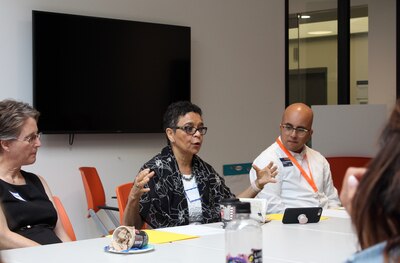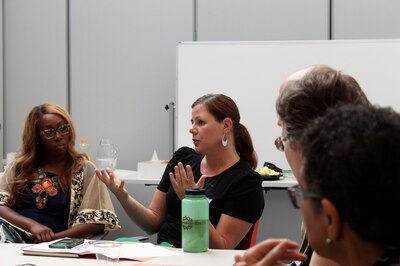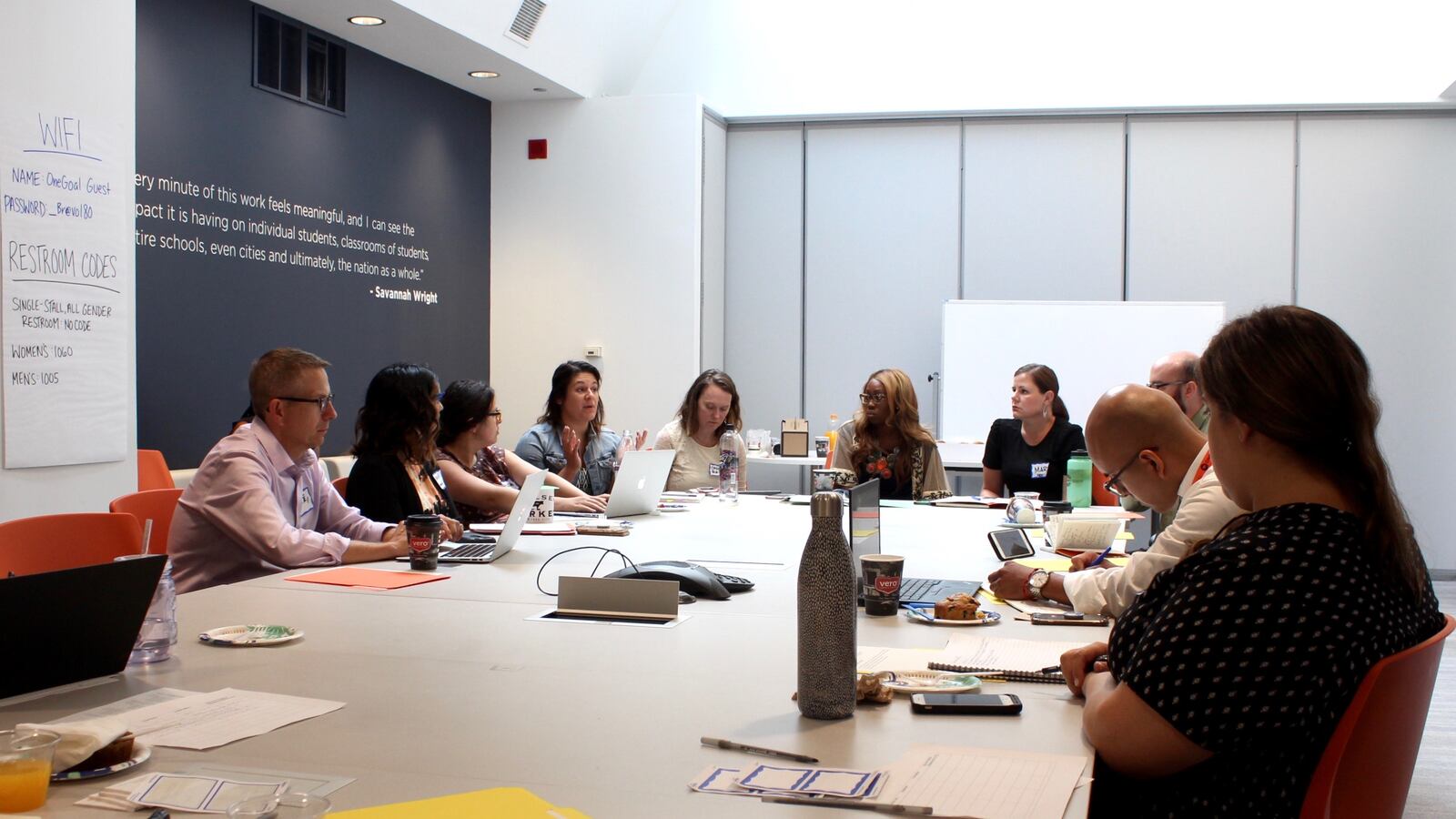It takes resilience and a lot of support to launch students on the path to college, let alone get through Year One.
“Students trying alone to make it is not going to work,” said Kate Kaushal, a counselor at Phillips Academy High School in Bronzeville. “It takes a village.”
In a conversation on Tuesday, educators, Chalkbeat reporters and editors, and staff from the nonprofit OneGoal brainstormed ways to marshal that village to guide more students in Chicago’s neighborhood schools toward college and careers. As the sixth stop of Chalkbeat’s summer listening tour, the two-hour discussion took place at the Loop office of OneGoal, which offers one-on-one coaching to help low-income high school students transition to college.
The discussion covered many of the challenges schools face, from keeping students moving forward during their “sophomore slump,” to conquering the complexity of college applications and financial aid forms — and, moving beyond, to keeping students in college once they get there. In 2016, 66 percent of CPS high school graduates enrolled in two- or four-year colleges. But of district students who had enrolled in college in 2011, only 57 percent graduated by spring 2016.
Tuesday’s group shared ideas that are working — and even came up with other bold ones that could catch on. Here are five ideas that came out of our conversation:
1. Build out a system of post-secondary “help desks” in libraries and public spaces

Problem: The variations among applications for colleges and trade programs is mind-boggling, even for adults, said Kaushal of Phillips Academy.: “Each college has a different process, and a different portal, and students get frustrated when applying.”
Solution: Sharon Thomas Parrott, an ex-officio member of One Goal’s Board of Directors who began her career as a CPS teacher, proposed a network of community “help desks” that could help students review options and navigate applications and federal financial aid forms. “How do we support schools and provide counseling opportunities without counselors?” she asked rhetorically. Help desks with services in English and Spanish would also help make the process more accessible to parents and guardians.
2. Financial aid navigators accessible to high school students throughout the city, either at schools or through organizations
Problem: College has become astronomically expensive. It’s great to encourage students to pursue higher education, “but don’t sugarcoat it either,” said Andrew Nelson, a humanities teacher at Multicultural Academy of Scholarship High School in South Lawndale. However, reality can also discourage families.
Solution: Alejandro Espinoza, OneGoal Chicago’s director of secondary partnerships, suggested that the city or schools can provide financial aid navigators to help families figure out how much schools cost, what financial aid is available, and how loans figure into the picture. “Parents won’t take a risk if they don’t know this information.”
3. Start the post-secondary conversation earlier

Problem: Many students don’t enter high school with thoughts about what they’ll do afterward, and may not think about them until junior year, when their options — such as entering into a trade or a college — become limited because they lack required courses and credits.
Solution: Mary Beck, the principal of Senn High School in Edgewater, said that her school has placed much emphasis on Freshman Connection, a program that gets incoming students acquainted with staff and graduation requirements before the school year starts. At Senn, the goal is to get students on track to graduate before they even show up for Day One of high school. “It’s setting yourself up so that you have options,” she said. “They have to be prepared to apply for a four-year college even if they don’t ultimately go.”
4. Focus on individual students once they get to college
Problem: Students who make it to college don’t always stay there. Beyond academics, it can be challenging to deal with a new environment, cost, and even culture. Adults often tell students that once they’re in college ‘you’re going to be an adult, no one is going to hold your hand,’ said Kaushal, “but sometimes someone still needs to hold their hand.”
Solution: Thomas Parrott said that colleges or external programs could provide counselors who sit down with incoming college students and looking at what classes they’ll take in freshman year, as those grades set the foundation for the students’ trajectories in college. Kaushal added that guidance needs to continue in college. While organizations such as OneGoal provide one-on-one coaching for college freshmen, she said that continued coaching will help ensure students ultimately graduate.
5. Students need to see success stories
Problem: Students sense challenges facing their family, neighborhood and city all the time. They need to hear stories of resilience — and see exactly how kids who look like them persevered.
Solution: OneGoal Director of External Affairs Chloe Lahre said that mentors, connected through a robust directory of program alumni, could offer practical advice and encouragement. Nelson of Multicultural Academy suggested more stories in the media about students overcoming setbacks. It would be helpful, he said, “seeing people who have had similar experiences and seeing what their story is like.”
In our listening tours, we’ve gathered parents, community groups, students, and educators to discuss pressing issues in Chicago education. Our seventh event, in partnership with City Bureau, is next Thursday, August 23. It is open to the public.

